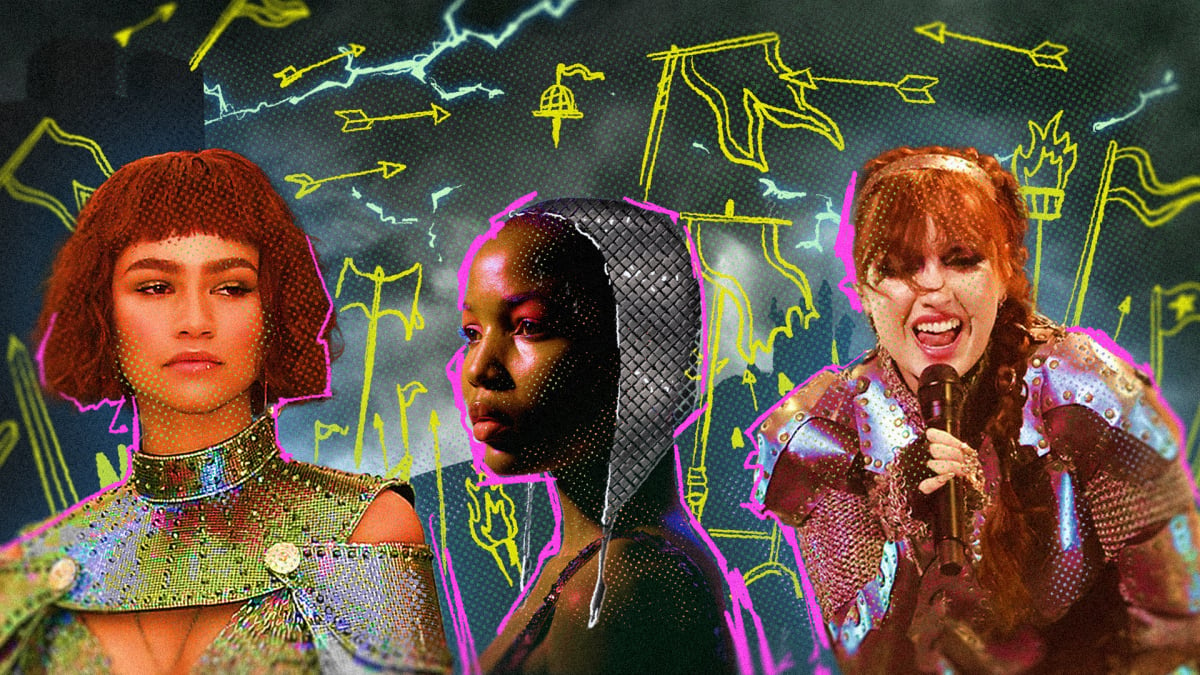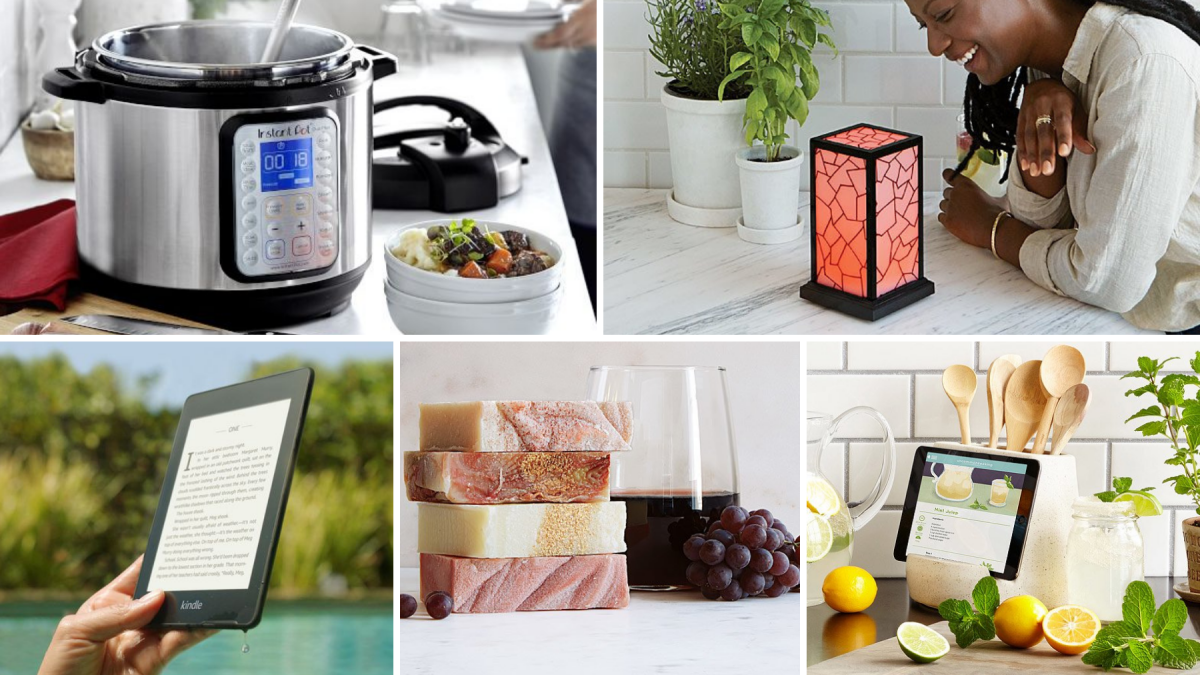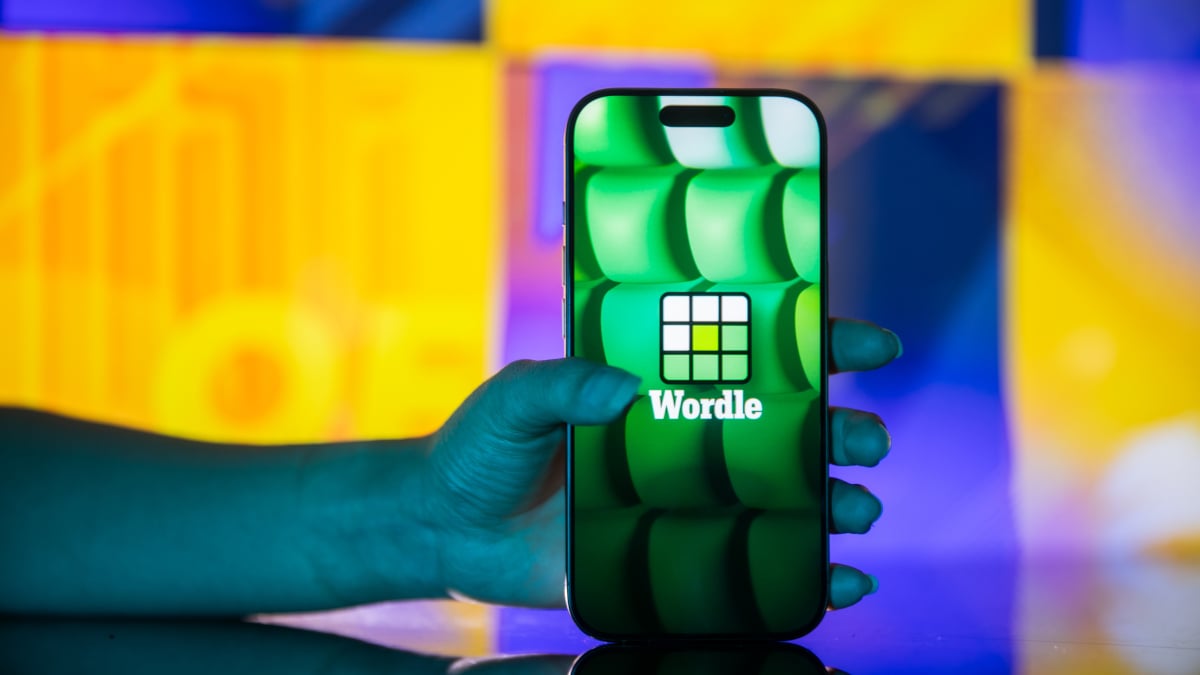Entertainment
Is castlecore the aesthetic of our technofeudal future?

We have a president who calls himself a king, TikTok fashion creators are teaching their followers how to DIY chainmail bonnets, actors are stepping onto red carpets adorned in silver motifs reminiscent of medieval armor, and Pinterest has predicted a new trend for 2025: “castlecore.”
Good enough: Welcome back, the Middle Ages.
The rise of castlecore
It’s clear to anyone paying attention that one of the dominant aesthetics of early 2025 is “castlecore.” Castlecore, also called medieval modern or future medieval, is a design trend — influencing typography, fashion, home design, and more — that combines medieval aesthetics like chainmail and stone architecture with modern comforts like air conditioning and vaccines.
We saw hints of this trend in 2018 when Zendaya wore a Joan of Arc-inspired armor look at the Met Gala. But now, castlecore is everywhere. A notable example of its resurgence is Chappell Roan’s “Roan of Arc” performance at the MTV VMAs, which brought medieval-inspired visuals back into the spotlight.
If you search for “chainmail” on TikTok or Instagram, you’ll find thousands of DIY tutorials where users are showing how to create their own wearable chainmail — from tops and bonnets to accessories. According to Pinterest, “medieval” is having a “major moment” this year — searches for “Antique ruby ring” increased by 50 percent, for “castle house plans” by 45 percent, for “chainmail necklaces” by 45 percent, and, most telling, for “medieval core” by 110 percent. In its annual trends report, the platform noted, “In 2025, Gen Z and Millennials will take home decor inspiration from ancient castles, while fashion and accessories will be gothic-inspired. It’s a comeback of the highest order.”
“My favorite part about this trend is that it spans across categories, so we’re going to see it primarily show up in home and fashion,” Sydney Stanback, the global trends and insights lead at Pinterest, told Mashable. “We’re seeing things like vintage tapestries, rich dark tones, and natural materials in homes, while medieval silhouettes, chainmail, and antique jewelry are taking over in fashion.”
This resurgence isn’t surprising, as fashion has long drawn inspiration from different historical periods. “But this aesthetic taps into the medieval period with its dark, gothic, and brooding visual language,” Mia Jacobs, a youth fashion strategist at WGSN, a consumer trend forecasting company, told Mashable. “However, this resurgence isn’t bound by historical accuracy; instead, we’re seeing a convergence of references from multiple time periods reinterpreted through a contemporary lens.”
This Tweet is currently unavailable. It might be loading or has been removed.
Technofeudalism, neo-medievalism, and our harsh political reality
At first glance, this trend may seem like another sign of humanity’s crow-like fascination with shiny silver objects. But its rise comes at a unique time politically. As castlecore’s popularity grows, so does the idea that we may be living in the age of technofeudalism and neo-medievalism. Technofeudalism is the idea that the lords and kings aren’t politicians or members of a monarchy but are, instead, tech companies — and neo-medievalism describes a time in which societies are fragmenting, economies are unbalanced, and threats seem always present. Seem familiar?
Kathy Pham, a creator who made a video detailing the connections between neo-medievalism and castlecore, told Mashable that “it’s interesting to see this version of medieval revival happening simultaneously with the decentralization of nations and states,” Pham said, referring to Great Britain leaving the EU in 2020 and President Donald Trump’s isolationist policies.
In his book Technofeudalism: What Killed Capitalism, former Greek finance minister Yanis Varoufakis argues that we are actually already living in a technofeudal state — and capitalism is a thing of the past. He says tech companies like Apple, Meta, and Amazon have changed the economy so much that we no longer exist in a capitalist society but have already begun transitioning into one that looks more like Europe’s medieval feudal system. If we combine his line of thinking with the rise of castlecore aesthetics, we aren’t using medieval aesthetics to escape a capitalistic society; we’re using it to escape a technofeudal one.
In an interview with Wired, Varoufakis argued that profit drives capitalism while rent drives feudalism — and we’ve moved from the former to the latter.
Mashable Top Stories
“My argument is that we have progressed forward to a new system, which has many of the characteristics of feudalism, but it is one step ahead of capitalism. To signal that, I added the word techno,” he told the news outlet.
This Tweet is currently unavailable. It might be loading or has been removed.
While castlecore might seem like a fashion or pop culture trend, its timing is hard to ignore. Of course, we’ve seen medieval revivals in the 1970s and 1990s, but with the rise of social media as a tool for fashion and politics, it’s much less colorful and, frankly, much more metal. And, as Pham recognizes, we’re just “seeing a lot more chainmail, silver, armored accessories,” at fashion shows, on red carpets, and online than previous revivals. We tend to romanticize the past when we crave escapism, but it also reflects our broader political and cultural climate.
Living in a neo-medieval world
In a video posted to Instagram Reels that’s garnered more than 50,000 likes, Pham points to a 2023 paper published by the RAND Corporation titled “U.S.-China Rivalry in a Neomedieval World,” which defines the neo-medieval era as “a historical period beginning around 2000 characterized by weakening states, fragmenting societies, unbalanced economies, pervasive threats, and the informalization of warfare.”
This Tweet is currently unavailable. It might be loading or has been removed.
Timothy Heath, a co-author of the paper, told Vox, “The last 200 years in many ways stand out as an incredible anomaly in human history, and that the situation we’re in now actually has a lot more features in common with the pre-1800 world than the recent past.”
The wealth gap continues to widen, the racial wealth divide remains strong, the cost of living surges, wages stagnate, and American politics grow increasingly polarized, with little room for cooperation. Research from the Carnegie Endowment underscores that Americans are emotionally divided, not just ideologically. The rise of this romanticized medieval aesthetic could be our collective attempt to escape this reality.
“For Gen Z, this aesthetic offers a sense of escapism from the ongoing polycrisis and the anxieties of the modern world as they find solace in historical fantasies,” Jacobs said. Stanback also says the trend hinges on the younger generation, saying they’ve driven trend which “speaks to its online staying power.”
Escapism, fantasy, and feudalism in pop culture
We see this with the historic rise of the romantasy genre, too. According to The Guardian, sales of science fiction and fantasy books increased by 41.3 percent between 2023 and 2024. These books are typically set in mystical times that resemble the medieval era. We’re talking castles, armor, and kings and queens. (Of course, we are also talking dragons and fantasy).
It’s not just fantasy books. The enduring success of Game of Thrones and House of the Dragon “continues to embed these aesthetics into mainstream culture,” Jacobs said. “At a time when AI and hyper-futuristic aesthetics are accelerating at pace, there’s also a growing counter-movement where individuals are seeking out what’s real.”
Yet it coincides with another paradox: we are living under the thumb of royalty, be it President Donald Trump’s self-declared kingship on Truth Social or Jeff Bezos’s management of Amazon, which bears more resemblance to technofeudalism than capitalism, and his attempts to dismantle the efforts of the free press.
Neo-medievalism and technofeudalism don’t exist in a vacuum, and soon after these economic and political systems re-entered our cultural consciousness, so did armored rings and chainmail bonnets.
“There’s that quote that history doesn’t repeat, but it rhymes,” Pham said. “So there is this sense of rhythm and pattern recognition that I’m seeing across pop culture, but also within our social-political climate. I’m not confident in saying that they’re directly connected, but it’s interesting to see those two parallels.”
We likely won’t be building stone castles any time soon, but it seems we are recognizing that our world is becoming more unpredictable and unstable—and our attachments to this aesthetic suggest a longing for permanence.
Politics and aesthetics have long been inseparable. While Chappell Roan may not have worn her iconic chainmail look as a direct response to technofeudalism or neo-medievalism, can we really say that one exists without the other? Is the rise of medieval aesthetics simply escapism, or is it a product of our current political moment?
Castlecore may just be another fleeting trend, something to match our escapist fantasies. But whether we’re donning chainmail accessories or escaping into romantasy novels, aesthetics are never separate from politics. And in a world that increasingly resembles the Middle Ages, perhaps it’s no surprise that we’re dressing for the occasion.
Entertainment
Best Mothers Day gifts: Show mom some love

Mother figures are the backbone of the world. Yours may be your biological mother, or maybe she’s your mother-in-law, your best friend’s mom, or simply someone whose motherly instinct has helped you through hard times.
Moms teach you the adulting necessities, give advice even if the problem is your fault, and above all, they put up with your shit and (almost) never complain.
The game plan here isn’t just to snag the last bouquet at CVS just so you’re not the kid who forgot Mother’s Day (but definitely also get flowers). And you don’t even need to spend a lot of money. (Peep our list of Mother’s Day gifts that cost less than $50. Want even more cheap gift ideas?
Skip the generic mugs and show your appreciation with a gift picked just for her: Whether it’s something to make a part of her life easier, something she’s mentioned wanting in passing, or simply something to make her feel like a damn queen, you can’t put a price on everything she’s done for you, but heartfelt gifts certainly help.
After all, they say “No matter how hard you try, you always end up like your mother.” But is that even a bad thing?
Entertainment
Ban subscriptions and get Microsoft Office 2024 for life for just £121

TL;DR: Grab Microsoft Office 2024 Home and Business for PC or Mac for just £120.54 through June 1.
You wouldn’t keep paying for Netflix if you could own your favorite shows, right? So why are you still subscribing to Office apps you use every day? Microsoft 365’s price keeps going up, but there’s finally a way to break free — and it’ll cost you way less in the long run.
Microsoft Office 2024 is the answer you’ve been looking for. Instead of monthly payments, simply pay £120.54 once and be set for life (reg. £188.37). It’s that simple. And, yes, this lifetime download works for PC or Mac.
What’s included?
This license comes with:
-
Word
-
Excel
-
PowerPoint
-
Outlook
-
OneNote
The newest version of Microsoft Office is a little different from Microsoft 365. But just because you’re switching to a lifetime license doesn’t mean you’ll miss out on some of the most recent updates. Word and Excel both still have AI integrations for text suggestions and smart data analysis, and PowerPoint still has improved tools for recorded presentations.
Once you’ve redeemed your purchase, you can install your apps on one computer. After that, they’re yours to use however you want. No more subscription fees or sudden price hikes to worry about.
Why rent when you can own?
Mashable Deals
Get a Microsoft Office lifetime license on sale for £120.54 with no coupon needed.
StackSocial prices subject to change.
Entertainment
Wordle today: Answer, hints for May 9, 2025

Oh hey there! If you’re here, it must be time for Wordle. As always, we’re serving up our daily hints and tips to help you figure out today’s answer.
If you just want to be told today’s word, you can jump to the bottom of this article for today’s Wordle solution revealed. But if you’d rather solve it yourself, keep reading for some clues, tips, and strategies to assist you.
Where did Wordle come from?
Originally created by engineer Josh Wardle as a gift for his partner, Wordle rapidly spread to become an international phenomenon, with thousands of people around the globe playing every day. Alternate Wordle versions created by fans also sprang up, including battle royale Squabble, music identification game Heardle, and variations like Dordle and Quordle that make you guess multiple words at once.
Wordle eventually became so popular that it was purchased by the New York Times, and TikTok creators even livestream themselves playing.
What’s the best Wordle starting word?
The best Wordle starting word is the one that speaks to you. But if you prefer to be strategic in your approach, we have a few ideas to help you pick a word that might help you find the solution faster. One tip is to select a word that includes at least two different vowels, plus some common consonants like S, T, R, or N.
What happened to the Wordle archive?
The entire archive of past Wordle puzzles was originally available for anyone to enjoy whenever they felt like it, but it was later taken down, with the website’s creator stating it was done at the request of the New York Times. However, the New York Times then rolled out its own Wordle Archive, available only to NYT Games subscribers.
Is Wordle getting harder?
It might feel like Wordle is getting harder, but it actually isn’t any more difficult than when it first began. You can turn on Wordle‘s Hard Mode if you’re after more of a challenge, though.
Here’s a subtle hint for today’s Wordle answer:
Gibberish.
Mashable Top Stories
Does today’s Wordle answer have a double letter?
There are no recurring letters.
Today’s Wordle is a 5-letter word that starts with…
Today’s Wordle starts with the letter T.
The Wordle answer today is…
Get your last guesses in now, because it’s your final chance to solve today’s Wordle before we reveal the solution.
Drumroll please!
The solution to today’s Wordle is…
TRIPE.
Don’t feel down if you didn’t manage to guess it this time. There will be a new Wordle for you to stretch your brain with tomorrow, and we’ll be back again to guide you with more helpful hints.
Are you also playing NYT Strands? See hints and answers for today’s Strands.
Reporting by Chance Townsend, Caitlin Welsh, Sam Haysom, Amanda Yeo, Shannon Connellan, Cecily Mauran, Mike Pearl, and Adam Rosenberg contributed to this article.
If you’re looking for more puzzles, Mashable’s got games now! Check out our games hub for Mahjong, Sudoku, free crossword, and more.
Not the day you’re after? Here’s the solution to yesterday’s Wordle.







